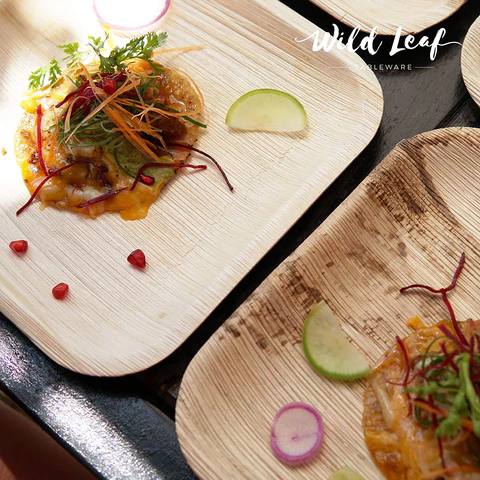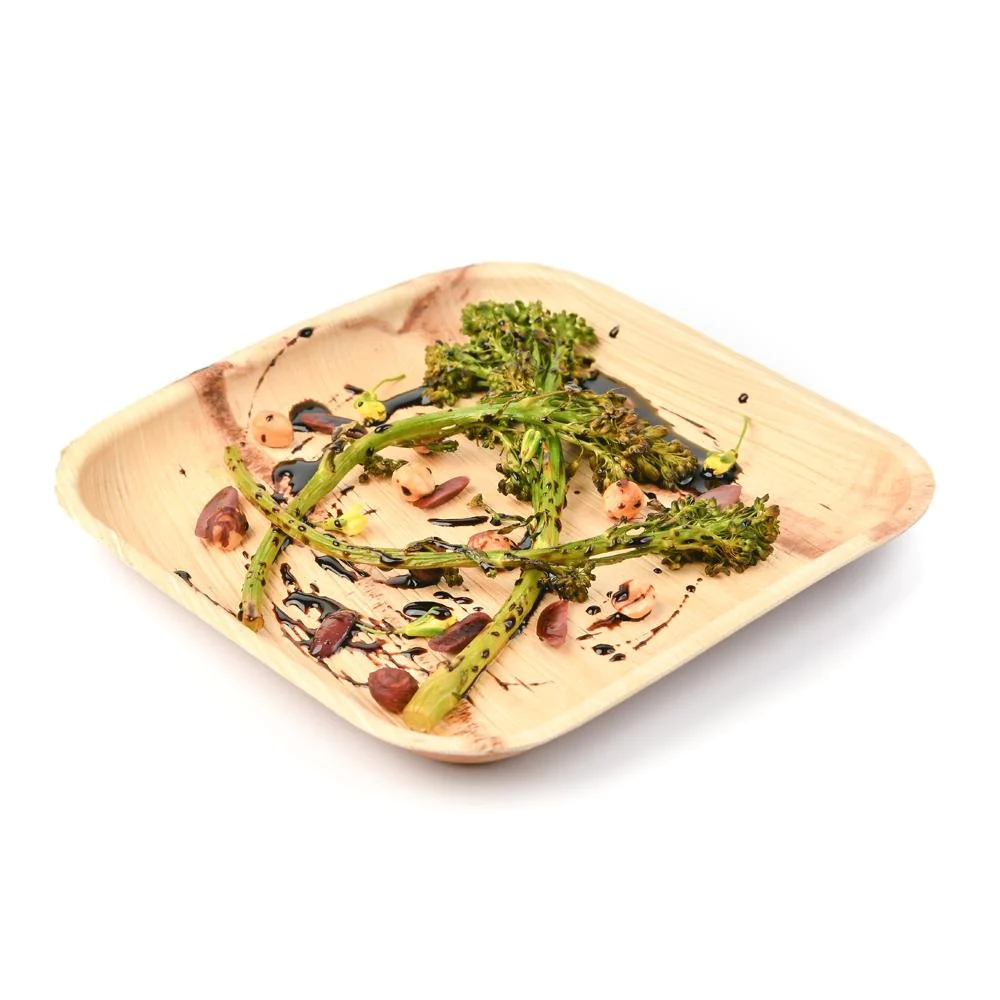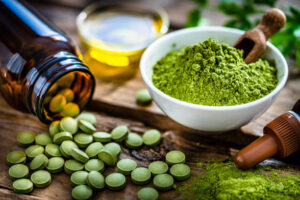
Palm Leaf Plates
Discover the top reasons why Palm Leaf Plates are the perfect eco-friendly, durable, and stylish choice for your dining needs. Embrace sustainability with elegance!
Table of Contents
Introduction to Palm Leaf Plates
In the quest for sustainable living and eco-friendly dining solutions, palm leaf plates stand out as a beacon of innovation and environmental stewardship. These plates, crafted from the fallen leaves of the Areca palm tree, are not just tableware but a statement of conscious consumerism that combines functionality with ecological responsibility.
What Are Palm Leaf Plates?
Palm leaf plates are created from the natural shedding of leaves from the Areca palm tree, which are then collected, cleaned, and molded into various shapes and sizes without the addition of synthetic chemicals or additives. This process ensures that the plates are completely organic, biodegradable, and compostable, providing a stark contrast to the non-degradable, pollution-causing alternatives that plague our planet.
The Rise of Eco-Friendly Tableware
As awareness about the environmental impact of single-use plastics and other non-biodegradable materials grows, so does the demand for products that can serve as viable, sustainable alternatives. Palm leaf plates meet this demand head-on, offering a solution that does not compromise on quality, durability, or aesthetic appeal. They represent a shift towards green living, where even our choices in tableware can reflect our commitment to preserving the environment.
The Aesthetic and Functional Appeal of Palm Leaf Plates
One of the most compelling attributes of palm leaf plates is their unique beauty. Each plate features a distinctive pattern, texture, and color, mirroring the natural elegance of the leaf it was made from. This uniqueness adds an authentic, rustic charm to meals, making them especially popular for weddings, parties, and other events where presentation matters as much as sustainability.

Environmental Benefits
Environmental Benefits
The adoption of palm leaf plates over traditional disposable tableware offers profound environmental benefits, aligning with global efforts to combat pollution and foster sustainable practices. These natural products not only reduce waste but also contribute positively to the ecological balance, making them an exemplary choice for eco-conscious consumers.
Biodegradability and Compostability
One of the most significant advantages of palm leaf plates is their complete biodegradability and compostability. Unlike plastic or styrofoam, which linger in landfills and oceans for centuries, palm leaf plates decompose naturally within a few months when composted properly. This rapid breakdown process returns valuable nutrients to the soil, enhancing its fertility without releasing harmful toxins or residues into the environment.
Reduction in Carbon Footprint
The production and disposal of palm leaf plates have a considerably lower carbon footprint compared to their plastic counterparts. Since they are made from naturally fallen leaves, the process requires minimal energy consumption and emits fewer greenhouse gases. Furthermore, the absence of synthetic materials or chemicals in their production means that palm leaf plates contribute significantly less to carbon emissions, aiding in the global effort to mitigate climate change.
Conservation of Resources
Palm leaf plates are produced using sustainable resources that do not deplete the environment. The leaves used are collected from the ground, avoiding deforestation and the destruction of palm trees. This sustainable harvesting ensures that the natural cycle of the ecosystem remains undisturbed. Additionally, the manufacturing process is water-efficient, further conserving valuable environmental resources.
Promotion of Sustainable Practices
The popularity of palm leaf plates encourages the adoption of more sustainable lifestyle choices among individuals and businesses alike. By opting for eco-friendly tableware, consumers send a strong message about the importance of environmental responsibility, influencing others to make conscious decisions that benefit the planet. This ripple effect can lead to broader changes in how products are designed, produced, and disposed of, fostering a culture of sustainability.
Health and Safety Advantages
Health and Safety Advantages
The shift towards using palm leaf plates is not just a win for the environment but also a significant leap forward in ensuring health and safety standards in dining experiences. Unlike conventional disposable tableware that often contains harmful chemicals, palm leaf plates offer a natural and safe alternative, highlighting their advantages in terms of health and safety.
Chemical-Free Manufacturing
Palm leaf plates are produced using a simple, chemical-free process. The leaves are collected, cleaned, steam-pressed, and sometimes lightly trimmed to give them their final shape and size. This method eliminates the need for synthetic additives or chemicals, which are commonly found in plastic and paper plates. As a result, there is no risk of these harmful substances leaching into food, making palm leaf plates a safer option for serving meals, especially hot foods which can increase the likelihood of chemical migration from container to food.
Non-Toxic and Allergen-Free
The natural composition of palm leaf plates ensures they are non-toxic and free from allergens. This makes them ideal for all users, including children and people with sensitive health conditions or allergies to plastics or certain metals. By using palm leaf plates, hosts can cater to their guests’ health and safety, providing peace of mind that the tableware is as safe as the food being served.
Safety in Usage
Palm leaf plates are sturdy and designed to handle various types of food without risk of contamination or injury. Unlike some disposable plates that may crack, splinter, or leach harmful dyes and chemicals, palm leaf plates maintain their integrity, even with hot, cold, wet, or oily foods. This durability not only ensures the safety of the meal but also enhances the dining experience by preventing accidents like spills or leaks that can occur with less reliable materials.
Sustainable Health Impact
Choosing palm leaf plates contributes to a larger, sustainable health impact by promoting eco-friendly practices that benefit public health. Reducing reliance on polluting disposable tableware reduces environmental toxins and waste, contributing to cleaner air and water and a healthier ecosystem. This holistic approach to health considers not only the immediate safety of the tableware but also the long-term health benefits of a cleaner environment.

Aesthetic and Practical Appeal
Aesthetic and Practical Appeal
Palm leaf plates are not just celebrated for their environmental sustainability and health benefits; they also boast an undeniable aesthetic and practical appeal. This unique combination makes them a favored choice for a variety of occasions, from casual gatherings to formal events, underscoring their versatility and elegance.
Unique and Elegant Design
Each palm leaf plate comes with its own unique pattern, texture, and color, reflecting the natural beauty of the leaf it was made from. This natural variation adds an authentic, rustic charm to any table setting, making each plate not just a tool for serving food but a piece of art that can enhance the overall dining experience. The elegant design of palm leaf plates makes them particularly popular for weddings, eco-friendly events, and upscale dining occasions where presentation is key.
Durability and Versatility
Despite their organic origins, palm leaf plates are remarkably durable. They are designed to withstand a wide range of temperatures, making them suitable for hot meals, cold desserts, and everything in between. Unlike some disposable options that may bend, fold, or break under the weight or temperature of the food, palm leaf plates maintain their shape and strength, ensuring a reliable dining experience. Their versatility extends to their suitability for a variety of settings, from outdoor barbecues to elegant dinner parties, demonstrating their ability to meet diverse culinary needs.
Practical for All Occasions
The aesthetic appeal of palm leaf plates, combined with their robustness, makes them a practical choice for all occasions. Whether it’s a backyard picnic, a corporate event, or a family dinner, these plates add a touch of sophistication while providing the convenience of disposable tableware. The ease of cleanup, coupled with the guilt-free disposal due to their biodegradability, further adds to their practicality, making event planning and execution smoother and more environmentally responsible.
Eco-Chic Dining
Palm leaf plates represent the pinnacle of eco-chic dining, where sustainability meets style. They allow hosts and caterers to make a statement about their commitment to the environment without compromising on the quality or aesthetics of their table setting. This alignment of values with visual appeal makes palm leaf plates a compelling choice for those looking to elevate their dining experience while adhering to eco-friendly principles.

Economic and Social Impact
Economic and Social Impact
The adoption of palm leaf plates not only signifies a shift towards environmental sustainability and health consciousness but also has a profound economic and social impact. These natural, eco-friendly products contribute to the development of local economies, support sustainable livelihoods, and encourage social responsibility, illustrating the broader benefits of choosing green alternatives.
Supporting Local Communities
The production of palm leaf plates is labor-intensive, requiring the collection, cleaning, and manufacturing of the leaves into plates. This process provides vital employment opportunities in rural areas where economic opportunities may be limited. By sourcing materials locally and employing traditional manufacturing techniques, the palm leaf plate industry supports the livelihoods of local artisans and workers, injecting economic activity into these communities. This not only helps in alleviating poverty but also in preserving traditional skills and knowledge that might otherwise be lost.
Promotion of Sustainable Livelihoods
Palm leaf plate manufacturing promotes sustainable livelihoods by utilizing renewable resources that encourage the conservation of the Areca palm trees. The sustainable harvest of fallen leaves ensures that the ecological balance is maintained, supporting biodiversity and the health of the environment. This approach contrasts sharply with industries reliant on deforestation or non-renewable resources that contribute to environmental degradation and economic instability in the long term.
Encouraging Social Responsibility
The growing popularity of palm leaf plates among consumers worldwide raises awareness about the importance of sustainable living and social responsibility. By choosing products that are not only environmentally friendly but also socially beneficial, consumers are making a statement about the values they support. This has the potential to influence broader social norms and encourage businesses to adopt more sustainable and ethical practices, leading to a ripple effect of positive change.
Cost-Effectiveness
Despite their numerous benefits, palm leaf plates are competitively priced, making them an accessible option for individuals and businesses alike. Their cost-effectiveness ensures that choosing an eco-friendly option does not have to come at a premium, making sustainable living more attainable for a wider audience. This affordability, coupled with their aesthetic and practical advantages, makes palm leaf plates an economically viable choice for both consumers and vendors.

Conclusion
Choosing palm leaf plates is a step toward a sustainable future. They offer a blend of environmental, health, aesthetic, and economic benefits that make them an excellent choice for anyone looking to reduce their ecological footprint without sacrificing style or functionality.
FAQs
- How long do palm leaf plates take to decompose? Palm leaf plates typically decompose within a few months under the right composting conditions, making them a highly sustainable option.
- Can palm leaf plates be used for all types of food? Yes, palm leaf plates are versatile and can be used for hot, cold, wet, or dry foods without compromising their integrity.
- Are palm leaf plates more expensive than plastic plates? While the initial cost might be slightly higher, the environmental and health benefits they offer make them a value-for-money choice in the long run.
- How are palm leaf plates made? Palm leaf plates are made by collecting fallen leaves, which are then cleaned, heat-pressed into shape, and trimmed to create the final product without using any chemicals.
- Can palm leaf plates be reused? Palm leaf plates are designed for single use but are compostable and biodegradable, making them environmentally friendly even after disposal.







My brother suggested I might like this website He was totally right This post actually made my day You cannt imagine just how much time I had spent for this information Thanks
Thank you for writing this; I have learned a lot from it.
you are in reality a good webmaster The website loading velocity is amazing It sort of feels that youre doing any distinctive trick Also The contents are masterwork you have done a fantastic job in this topic
Your blog is a constant source of inspiration for me. Your passion for your subject matter is palpable, and it’s clear that you pour your heart and soul into every post. Keep up the incredible work!
Its like you read my mind You appear to know so much about this like you wrote the book in it or something I think that you can do with a few pics to drive the message home a little bit but other than that this is fantastic blog A great read Ill certainly be back
Wonderful beat I wish to apprentice while you amend your web site how could i subscribe for a blog web site The account aided me a acceptable deal I had been a little bit acquainted of this your broadcast provided bright clear idea
Great article! Your insights are very valuable, and the way you presented the information made it easy to understand. I appreciate the time and effort you put into researching and writing this. It’s a great resource for anyone interested in this topic.
Your blog is a breath of fresh air in the often stagnant world of online content. Your thoughtful analysis and insightful commentary never fail to leave a lasting impression. Thank you for sharing your wisdom with us.
Your blog is a beacon of light in the often murky waters of online content. Your thoughtful analysis and insightful commentary never fail to leave a lasting impression. Keep up the amazing work!
Your writing is not only informative but also incredibly inspiring. You have a knack for sparking curiosity and encouraging critical thinking. Thank you for being such a positive influence!
Your blog is a constant source of inspiration for me. Your passion for your subject matter is palpable, and it’s clear that you pour your heart and soul into every post. Keep up the incredible work!
I was recommended this website by my cousin I am not sure whether this post is written by him as nobody else know such detailed about my difficulty You are wonderful Thanks
Your blog is a testament to your dedication to your craft. Your commitment to excellence is evident in every aspect of your writing. Thank you for being such a positive influence in the online community.
Reading your essay was a true pleasure for me. Even the more difficult subjects are easily understandable because of how you present them. Thank you for taking the time to provide such comprehensive details. For anyone interested in this topic, this is an excellent resource.
Keep up the fantastic work!
Keep up the fantastic work!
Keep up the fantastic work!
Your blog is a testament to your expertise and dedication to your craft. I’m constantly impressed by the depth of your knowledge and the clarity of your explanations. Keep up the amazing work!
Your post is fantastic, and I appreciate it. The data you supplied was both practical and simple to grasp. Your ability to simplify otherwise difficult ideas is much appreciated. Anyone interested in learning more about this subject would benefit greatly from reading this.